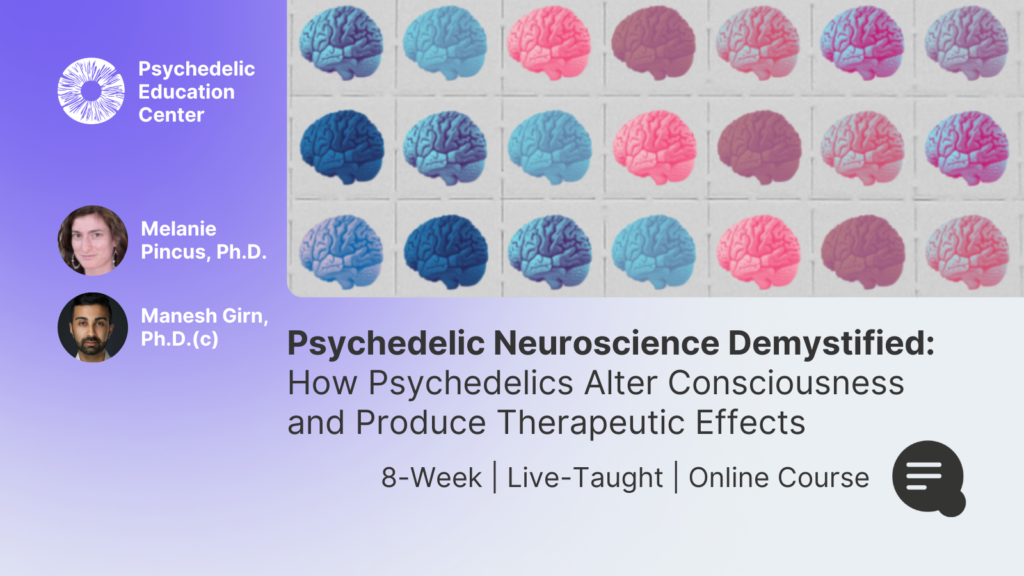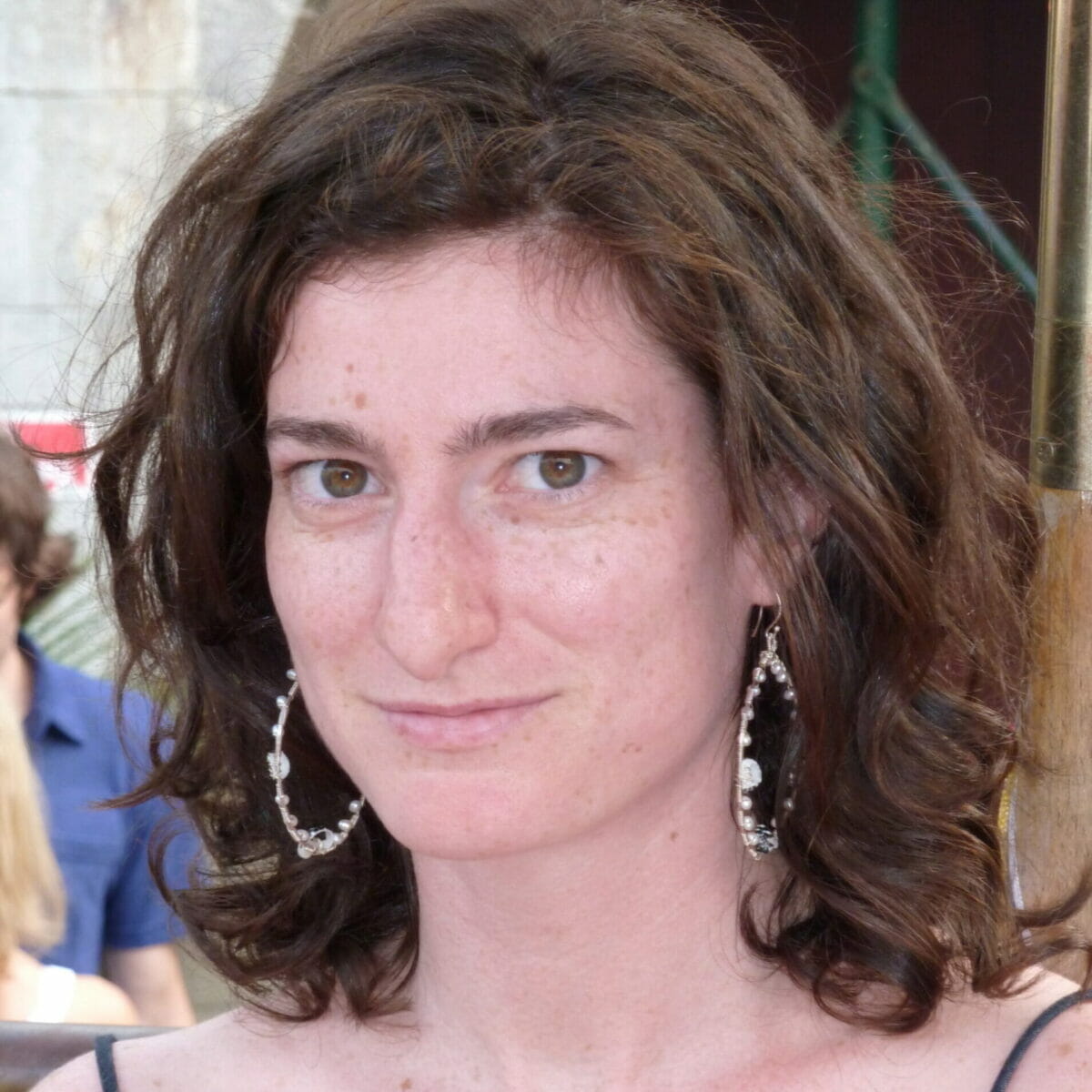Psychedelics are a fascinating class of compounds that have potent effects on our consciousness. After a multi-decade hiatus, scientific research on psychedelics has now resumed with full force. One field that has rapidly developed in recent years is psychedelic neuroscience, which applies the cutting-edge frameworks and tools of modern neuroscience to understand how psychedelics affect the brain and nervous system to elicit their profound effects. The latest findings from this breakthrough field have increasingly spilled into popular culture and are often profiled in the media – it’s now commonplace to hear terms like ‘default mode network’ and ‘neuroplasticity’ casually thrown around when discussing psychedelics and their effects.
However, much of the research is quite technical, and typical media treatments are often either highly simplistic and watered-down, or plainly inaccurate and sensationalistic. Most people just don’t have the necessary background to properly understand and communicate findings beyond repeatable buzzwords and trickle-down narratives.
It’s easy to wonder: what’s the practical relevance of psychedelic neuroscience for psychotherapy or for individuals navigating their own psychedelic experiences?
Don’t Worry – It’s Only Temporary
Understanding the science of psychedelics can be really helpful for therapists and clinicians preparing their clients for psychedelic experiences, and helping clients conceptualize and understand their experiences afterward. Psychedelic experiences can sometimes be quite overwhelming and hard to make sense of. It can be challenging to experience the profound alterations of consciousness they can elicit, which span from complex dream-like images and vivid memory recall, to ego-dissolving mystical-type effects, to perceptual distortions and synesthesia.
However, neuroimaging studies increasingly reveal what is unfolding in the brain during a psychedelic experience, and how these changes might map onto aspects of the subjective experience. Serotonergic psychedelics (like LSD, psilocybin and mescaline) disintegrate typically observed networks, including the default mode network, which is superseded by a more globally interconnected brain and more complex (or ‘entropic’) brain dynamics. In this globally interconnected state, there is a temporary increase in the connectivity and communication between different regions of the brain that normally don’t communicate much with each other. It’s like different cliques at a high school party spontaneously starting to intermingle with each other and party as a unified whole.
By reminding and reassuring clients that the intense effects they are experiencing are directly related to temporary changes in brain activity, clients may be less concerned that they are “gone without return” or that there is something inherently “wrong” or “bad” about their experience. It can also provide a useful model or framework to ground and interpret what emerges during their journey. They can rest assured that no matter how radical and reality-shattering their psychedelic experience is, it’s being underpinned by temporary changes in how brain regions are communicating and interacting over time.
Predicting the Unpredictable
Research has found that an individual’s psychological traits and brain characteristics can help predict the nature of their psychedelic experience, as well as the likelihood that they might experience long-lasting therapeutic benefits. The principles of ‘set and setting’ are deeply ingrained in psychedelic therapies, and signify the integral role that context plays in determining therapeutic outcomes. ‘Set’ concerns one’s mental and emotional state immediately before the psychedelic experience, encompassing such facets as personality and mood. Meanwhile, ‘setting’ pertains to the physical, social, and cultural milieu in which the psychedelic is taken. Given that traits and moods have been shown to correspond with differences in brain function, it is likely that brain structure and function may prove effective in predicting subjective effects and treatment response. This ‘precision medicine’ approach – using brain markers to forecast how individuals will respond to a given drug – has been applied to antidepressants and ADHD medications, providing a precedent for such a strategy in the realm of psychedelic therapy.
A recent study conducted by Enzo Tagliazucchi and colleagues illustrates this point. Neuroscientists have found that certain brain waves, called theta waves, may affect how people experience psychedelic drugs like DMT, as theta waves are associated with mind-wandering. Tagliazucchi and colleagues conducted electroencephalogram (EEG) recordings of brain electrical activity and discovered that people who had high levels of theta waves before taking DMT had less intense feelings of unity and transcendence during their psychedelic experience, showing that greater theta waves likely reflect a brain state that is not conducive to being immersed in a psychedelic experience. They suggest that measuring theta waves with EEG before taking DMT could help predict how likely someone is to have a mystical-type experience.
Their findings also appear to suggest that priming subjects to reduce theta power before taking a serotonergic psychedelic may help increase the depth of their mystical experience. For example, an individual could reduce theta with neurofeedback training, in which feedback from an EEG headset would allow them to modulate their brain activity to achieve a desired brain and psychological state. Although further research is required before any definitive conclusions can be drawn, emerging research like this suggests that capturing information about brain states – beyond what can be subjectively reported – may prove to be a valuable tool in predicting an individual’s psychological readiness for a psychedelic experience.
The Nuances of Psychedelically Boosted Neuroplasticity
The proliferation of interest in serotonergic psychedelics, MDMA, and ketamine is in no small part due to their remarkable ability to act as ‘psychoplastogens’ – compounds that enhance neuroplasticity in the brain. Neuroplasticity refers to the ways in which neurons in the brain change their connections with each other or create new ones, which is critical for the brain’s ability to learn, adapt to new experiences, and recover from injury. Psychedelics’ ability to enhance neuroplasticity has frequently been highlighted as central in eliciting therapeutic effects across a range of mood disorders and stress-related conditions such as depression, anxiety, and PTSD, which makes sense because impaired neuroplasticity has been reported for all of these disorders.
Research in rodents has suggested that, generally, for most psychedelics, the period between six and 72 hours post-psychedelic experience is when neuroplasticity is at its highest.
However, changes may last for much longer. For instance, LSD has been shown to promote the expression of neuroplasticity-related genes in rodents even one month after treatment had ceased. More and more research is being conducted on these effects, but there is clear practical relevance for clinicians, therapists, and everyday people. Understanding the nuances of psychedelically boosted neuroplasticity – including how long the effects last and where in the brain they occur for a given substance – is critical for designing optimal integration practices.
An in-depth understanding of psychedelic neuroscience can serve as a valuable tool for therapists and individuals seeking to navigate the intricate and potentially transformative realm of psychedelics. Familiarity with scientific research can empower practitioners to tailor their approach to preparation, the acute experience itself, and integration, thus optimizing therapeutic outcomes.
What’s more, the field of psychedelic neuroscience is profoundly intriguing and sometimes referred to as the “quantum mechanics” of neuroscience – neuroscientists are exploring the frontiers of consciousness with a cutting-edge discipline, and unearthing fascinating gems along the way. For example, did you know that psychedelics can enhance the firing rate of excitatory neurons in rodents’ prefrontal cortex by an astounding 481% over baseline, significantly altering communication throughout brain networks? Did you know that research is uncovering that the brain effects of psychedelics might also be tightly linked to our immune system and microbiome, with relevance to mental health? Or that both MDMA and LSD increase oxytocin levels, which plays a role in social bonding?
These and other fascinating discoveries will be covered in our upcoming eight-week course, “Psychedelic Neuroscience Demystified: How Psychedelics Alter Consciousness and Produce Therapeutic Effects.” This course was designed to be accessible to clinicians, therapists, and curious everyday people, making students well-versed in this emerging field, giving them the ability to understand new findings, put them into practice, and be informed participants in ongoing discussions.
Class begins May 17. Learn more here:



